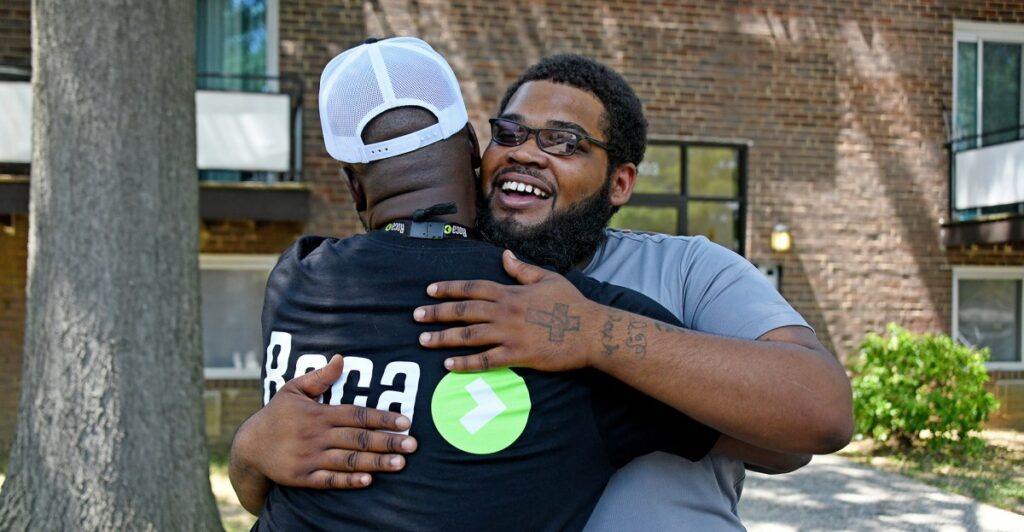Over the last two years, a quiet miracle has been playing out across the United States: People are killing each other far less often.
Murder and other types of violent crime spiked across the country in 2020, when the pandemic closed down schools and recreation centers and the police murder of George Floyd fueled a collapse in community trust in policing. Violent crime stayed high for the next two years.
But murders fell by about 12 percent in 2023 — the largest drop ever recorded in federal crime statistics — and may have declined even further in 2024. Federal data for the year has yet to be released, but murders likely fell around 14 percent in 2024, according to data compiled by the Real Time Crime Index. This year, they’re down roughly 20 percent. Jeff Asher, a crime analyst who helps run the index, said 2025 is on track to have the lowest murder rate since 1960, when the FBI began keeping reliable records.
One of the most remarkable examples of this trend is Baltimore, which in the first six months of this year has had its fewest homicides in five decades.
Baltimore, like many other cities in the US, received a massive influx of federal funding in 2021 from the American Rescue Plan Act (ARPA). In the last few years, the funding paid for things like new recreation centers and street lights in high-crime areas. At the same time, the Biden administration distributed billions in grants to nonprofit violence reduction groups.
That funding, Asher told Vox’s Today, Explained podcast, may be part of the answer. He described an “everything but the kitchen sink” theory of gun violence reduction, with a tide of federal money addressing multiple potential factors, directly and indirectly.
“It’s a lot of slop being thrown against a wall, but it’s also, I think, well-informed slop, if that’s a thing,” Asher said. “And it is the thing that I think helps to explain why we’re seeing [a decline in murder rates] everywhere.”
How Baltimore got a handle on gun violence
Baltimore’s murder spike began earlier than the rest of the country. It came in 2015, after a young Black man named Freddie Gray was killed in police custody. Violent crime rose to historic highs and stayed elevated through 2020, when Brandon Scott was elected mayor on a platform of reforming how the city approaches gun violence.
“The goal was very simple,” Scott told Vox. “We were going to reduce the number that has sunk many Baltimore mayors for years by 15 percent from one year to the next, and that was homicides.”
Scott’s team has leaned into a strategy called “focused deterrence.” It calls for concentrating resources on the small group of people — mostly young men and boys — who are most likely to be both victims and perpetrators of gun crime.
Baltimore police have tried focusing on these high-risk young men before; what’s new here is the carrot: The city partners with nonprofits to offer them job training, mental health support, housing assistance, and other services to try and head off gun crime before it happens.
“What we were doing [before] is we were trying to arrest the criminals who were committing the acts, but there were no wraparound services,” Baltimore Police Commissioner Richard Worley told Vox. “There was nothing offered for them to get out of the game.”
The effort was initially funded by tens of millions of federal dollars. And preliminary research suggests it’s moving the needle.
“My whole mindset changed for life,” said Malik, 20, who got involved with Roca Baltimore, an anti-violence group that partners with the city on focused deterrence, after he finished a stint in prison for a gun charge in 2023. “I think way different — I’m more disciplined now.”
Other young men at Roca Baltimore said they thought a general improvement in the infrastructure in their neighborhoods was contributing to the decline in gun violence. Scott’s administration received $41 million from the ARPA to renovate the city’s parks, pools, and recreation centers.
“All of the [recreation centers] getting reopened, getting refurnished, rebuilding and all, everything looking better and stuff like that. Just simple things like that can go a long way,” said Antonio, 20, another member of the Roca program in Baltimore. “If you got somebody in a messed-up environment, all they see is abandoned houses, all the recs closed, no activities. What else is there to do [but be] outside? You feel me?”
What’s next for Baltimore
The tenuous progress in Baltimore and elsewhere is now under threat.
This spring, Roca Baltimore found out it was one of the programs impacted by the Justice Department’s decision to cancel nearly $1 billion in violence reduction grants; it lost a million dollars in grant money that had already been promised. The organization has had to lay people off, and it will serve fewer kids this year than last year. After the passage of President Donald Trump’s reconciliation package earlier this month, Scott is also bracing for the additional ripple effects of federal cuts to Medicaid and food benefits.
“It’s really sad because you have a president and administration and a party that claims that they want to deal with violent crime, right?” Scott said. “But then they cut Roca. They cut…people that are out here helping to prevent violence simply because they don’t believe in the methods that they use.”
Asher, the crime analyst, cautioned that it’s difficult to predict what is going to drive gun violence up or down. It may continue to trend downward even if the funding cuts force Baltimore and other cities to scale back the anti-violence strategies developed over the last few years. But, he said, if history is any guide, gun violence will likely begin to trend back up at some point — and that’s when the loss of those programs will be felt the most acutely.
“These are the arrows you want in your quiver when things start to turn bad,” Asher said. “And so all we’re doing is basically upping the difficulty the next time violence goes up.”

